한식 읽기 좋은 날
Vol 40. Nourishing Summer Food
A Fierce Food Competition in 《Joseon Moosang Sinsik Yori Jebeop》
The one and only cookbook 《Joseon Moosang Sinsik Yori Jebeop》 written by Officer Lee Yonggi during the Joseon Dynasty contains a variety of recipes, including soup, stew, roast, steamed dish, salad, braised dish, etc. We looked for the recipes that used the ingredients for nourishing food for the summer among the ones made using fire.
They are warm dishes from an old book that will provide a refreshing feeling during the hot summer, similar to fighting heat with fire.
Source. 《Joseon Moosang Sinsik Yori Jebeop》 (by Lee Yonggi, Rice Tree)·Korean Traditional Knowledge Portal (www.koreantk.com)
How to Make Guk (Soup)
Soup is an essential part of a Korean meal where rice is the staple food.
In 《Joseon Moosang Sinsik Yori Jebeop》, there are a total of 58 soup recipes, including yukgaejang (spicy beef soup). There are also recipes for soup dishes with unfamiliar names, such as goltang, bunggeojigol, jujeotang, etc.
The recipe that 《Joseon Moosang Sinsik Yori Jebeop》 introduced as a dish for midsummer is “chupotang” in the How to Make Soup section. If you want to learn how to make chupotang, you must follow the instructions on how to make yukgaejang (spicy beef soup) and gomguk (beef bone soup).
Yukgaejang (spicy beef soup)
Main ingredients Green onion, sinewy parts of beef (various meat parts, such as gwangdae meori, knucklebone, shank, ribs, tripe, intestines, stomach, gonjasoni, pancreas, spleen, etc.), lean meat, jang, oil, ground sesame salt, pepper, and gochujang (red chili paste)
How to make it
① Blanch the green onions, wash them in water, squeeze the water out, and cut them into 1-inch lengths.
② Thoroughly wash the sinewy parts of beef, such as gwangdae meori, knucklebone, shank, ribs, tripe, intestines, stomach, gonjasoni, pancreas, spleen, etc., and boil them in fresh water. Poke them with a skewer and if they are tender, take them all out.
③ Tear the lean meat into small pieces by hand and chop the rest. Mix them with green onions. Add soy sauce, oil, sesame seeds, and pepper, and mix them. Put the meat back into the broth and boil it for a while.
④ Mix in gochujang (red chili paste) and boil it for a while.
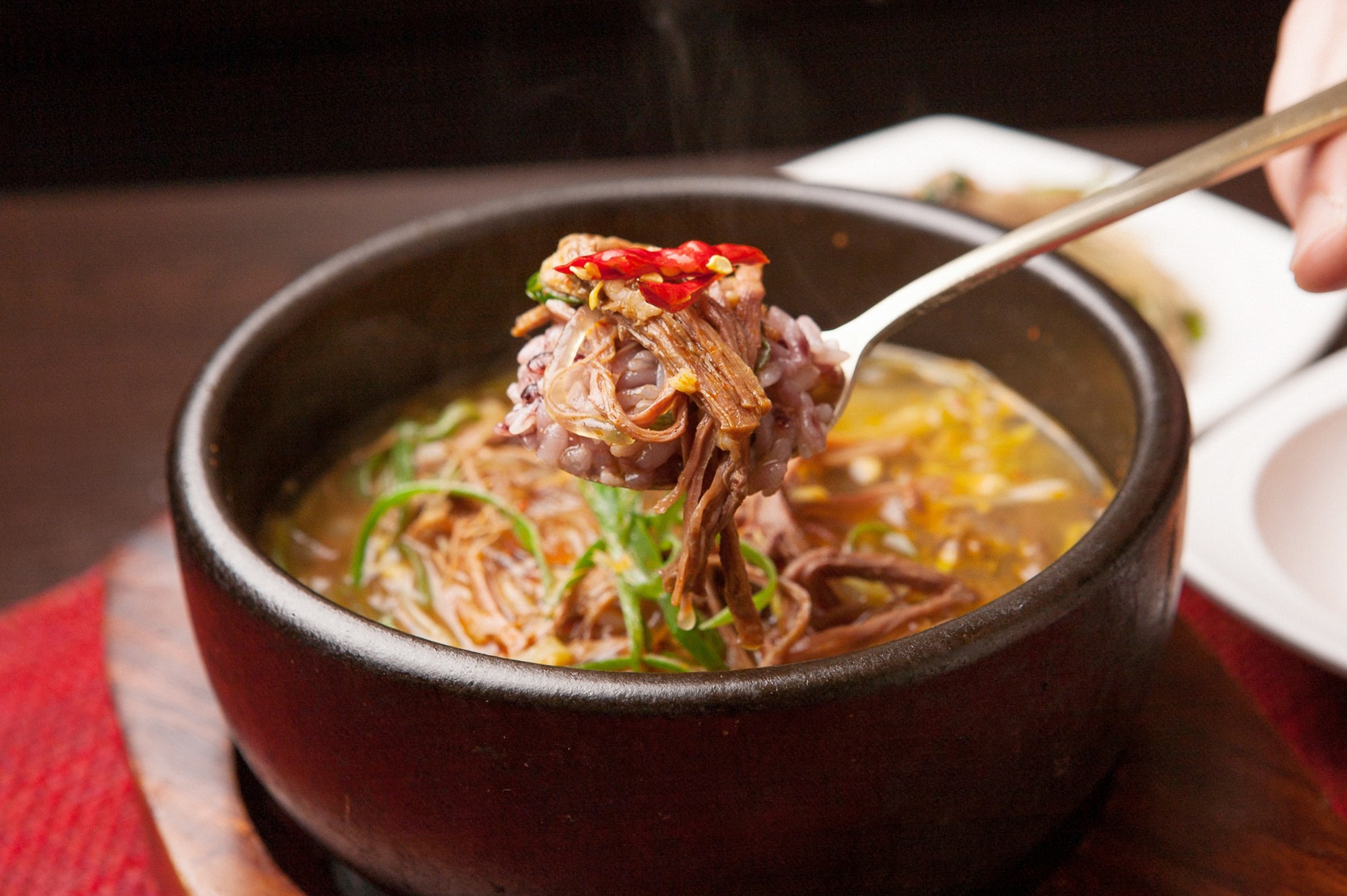
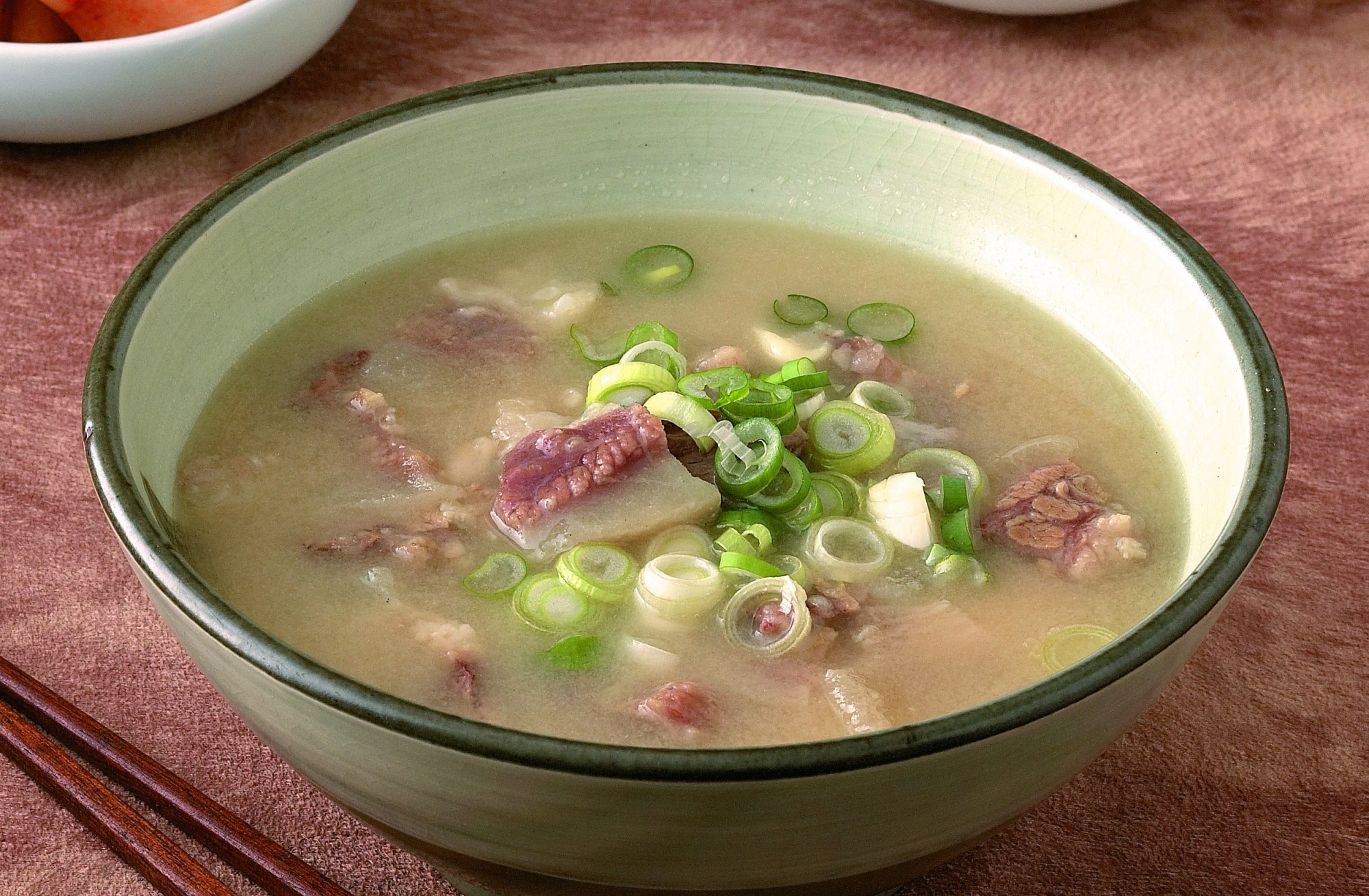
Gomguk (beef bone soup)
Main ingredients Meat, radish, jinjang (aged soy sauce), home meju jang, oil, pepper, and ground sesame salt
How to make it
① Prepare the meat like yukgaejang (spicy beef soup), and bring the ox hoof and tail to a boil in a pot.
② When it boils, cut the radish into large pieces, put them in the pot, and take them out when they become soft.
③ Cut the radish into thick squares, add jinjang, and mix them together until they become reddish in color.
④ Cut various meats as when making yukgaejang (spicy beef soup), add flavorful home meju jang, oil, pepper, sesame salt, and mix them thoroughly. When eating soup, put the meat in it. However, if you only make a small amount, add the marinated meat and boil them together before serving.
Tip
If you want to make yukgaejang (spicy beef soup) or gomguk(beef bone soup), don’t use miscellaneous meat. Instead, use 4 to 5 parts, such as brisket, brisket navel end, shank, and ribs, and add sea cucumber and abalone, and bring the soup to a boil.
The soup will taste sweet and will not smell of cow dung. Remove the oil that floats to the top and add it as oil when you make doenjangjjigae (soybean paste stew).
Chupotang
Main ingredients Gomguk ingredients, radish, cucumber, oil, soy sauce, ground sesame salt, pepper, sesame seeds, and salt
How to make it
① Cut the radish and cucumber, and pickle them in salt for a while. Wrap them in a clean towel and squeeze out the water.
② After stir-frying the radish and cucumber in oil, mix them together with the gomguk ingredients, soy sauce, oil, sesame salt, and pepper thoroughly.
③ Clean the sesame seeds well so that there is no sand, place them by the window, and rub them with your palms to remove the skins.
④ Grind the sesame seeds on a millstone with water and sift through a sieve, and add a little salt.
⑤ Add the prepared meat and eat it as a side dish.
How to Make Baeksuk
For summer nourishing food, “baeksuk”, which is boiled or simmered meat or fish without seasoning, cannot be left out. 《Joseon Moosang Sinsik Yori Jebeop》
introduces the baeksuk recipes starting with young chicken baeksuk, in which several whole chickens are boiled thoroughly, the meat is eaten by lightly dipping it in salt, and the broth is seasoned with salt and pepper. Other recipes included ingredients such as carp, snapper, herring, skate, octopus, beka squid, freshwater snail, and rib baeksuks. Unlike the young chicken baeksuk eaten by dipping the meat in salt, other baeksuks are to be eaten by dipping in chogochujang (sweet and sour red chili paste) and gochujang (red chili paste).
Octopus Baeksuk
Main ingredients Octopus, salt, and chojang (soy sauce with vinegar) or chogochujang
How to make it
① Sprinkle salt on the octopus, peel the shell, cut the head, cut the legs one inch (2.54 cm) apart, and place them in a bowl.
② When the water in the pot begins to boil, add the octopus legs, and cook them lightly. Eat them by dipping in chojang or chogochujang. If they are cooked until the color is red, they will become hard and tasteless.
③ The head of an octopus contains the ink sac, so it must be cooked for a longer time. However, if it is overcooked, the ink sac will burst, which will not look presentable.
④ Remove the ink sac and eat it because it is very good.
Galbi Baeksuk
Main ingredients Galbi, jeokguk (salted shrimp), and chojang (soy sauce with vinegar)
How to make it
① If beef (heifer) ribs are overcooked, the meat comes loose from the bone. Remove the meat before it comes loose.
② However, boil the bull ribs for a long time as the meat is very tough.
③ If you add a little bit of salted shrimp and boil it, the soup and meat will taste even better. Eat the meat by dipping it in chojang.
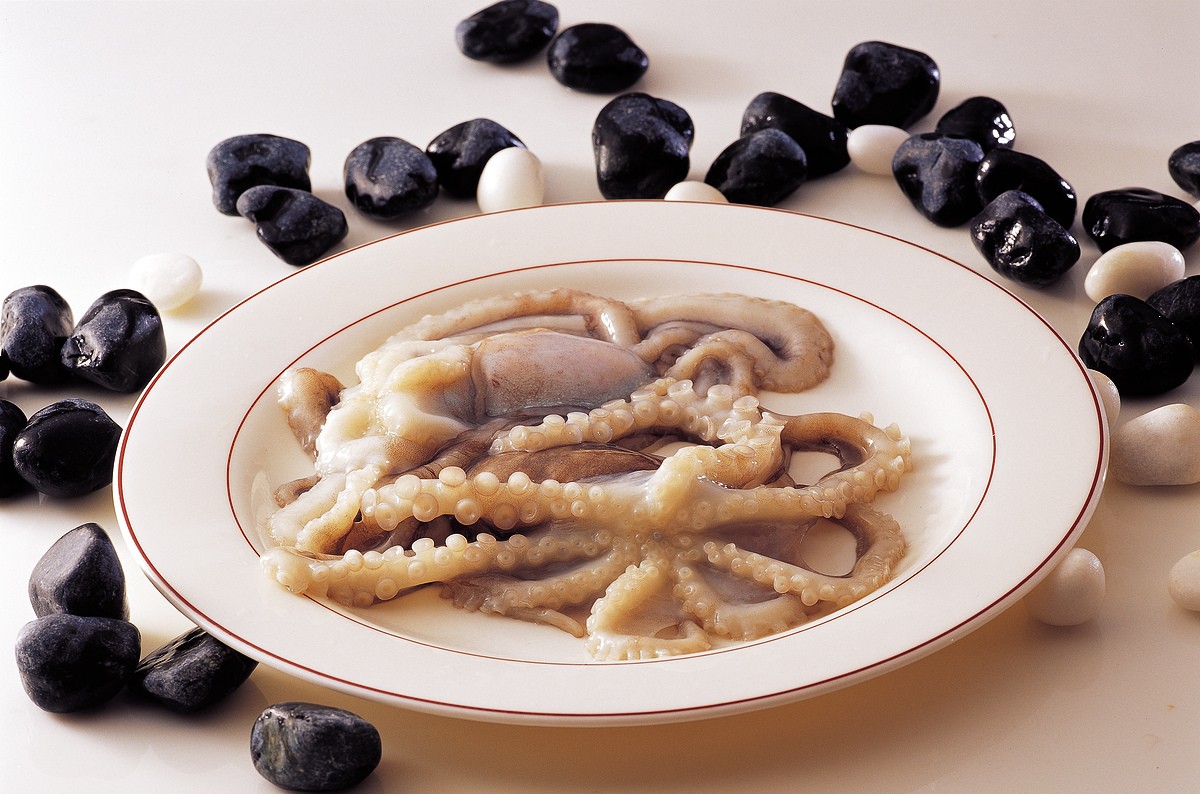
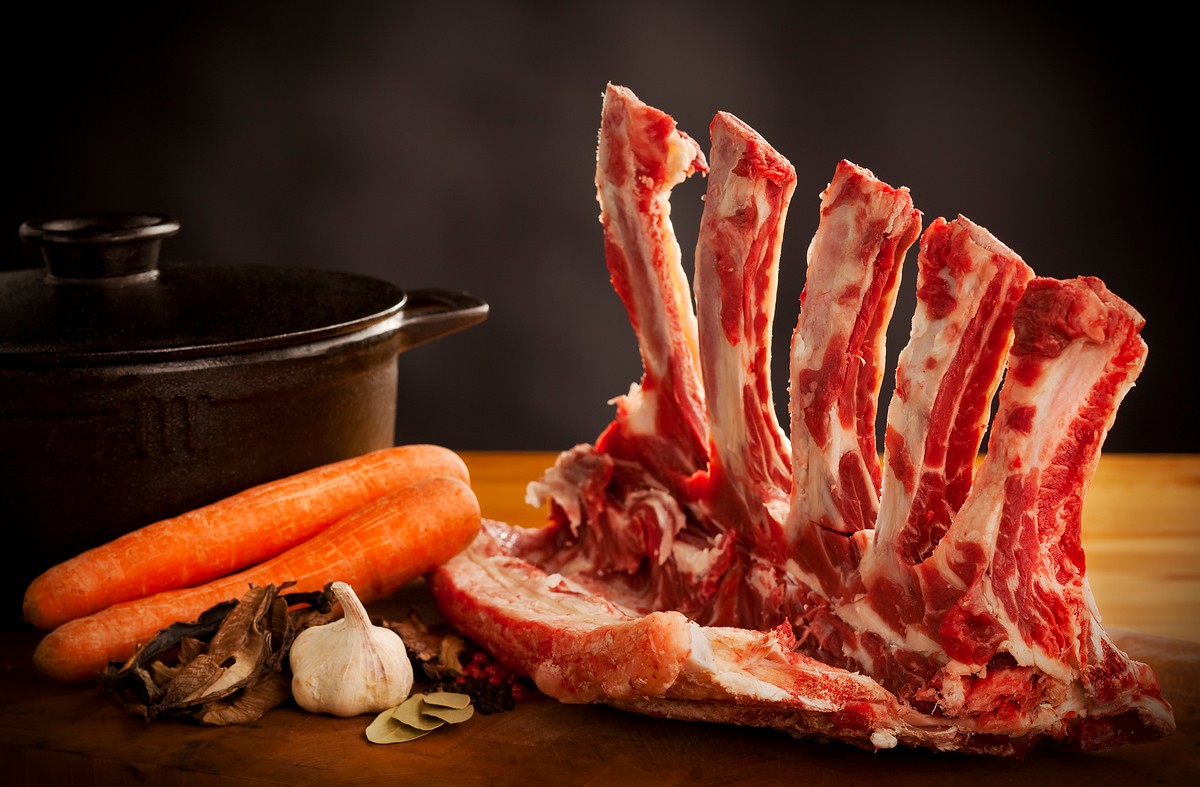
How to Make Jijimi
Jijimi usually refers to pan-friend dishes, but in the past, it also referred to the dishes that were simmered in salty broth with less broth than soup. 《Joseon Moosang Sinsik Yori Jebeop》 selects “carp jijimi” as the best jijimi by stating that it is best eaten after the ice has frozen. The June issue of <A Good Day to Read About Korean Food> introduces the jijimi recipe with croaker, which is fatty and delicious after the zucchinis, which were previously tasteless, are in season.
Croaker Jijimi
Main ingredients Croaker, meat, zucchini, green onion, ground sesame salt, sesame oil, gochujang (red chili paste), and ganjang (soy sauce)
How to make it
① Prepare it like a carp jijimi, but do not add a lot of meat because the head is more delicious.
② As it tastes better with zucchinis, cut the zucchini into big cubes and bring to a boil
Zucchini Jijimi
Main ingredients Zucchini, waejang (Japanese soybean paste), tojang (bean paste), and meat
How to make it
① Zucchini jijimi will taste better if cooked with a mixture of Japanese soybean paste and tojang.
② Add a lot of fatty meat and bring to a boil.
How to Make Carp Jijimi
Method 1
① Do not scale the carp. Just remove the gallbladder and wash it.
② Cut the head of the carp, then cut its body in half, and then into large pieces.
③ Season the water with gochujang (red chili paste), then bring it to a boil with the meat and green onions.
④ When the water begins to boil, add the trimmed carp, and boil until it is soft.
⑤ Cut the radish into large squares, and boil them together until the bones become soft.
Method 2
① When the water begins to boil, add the carp and close the lid.
② Pour in the ganjang (soy sauce), followed by the makgeolli (unrefined rice wine) or alcohol, and boil again.
③ When it reaches the consistency of thin porridge, cool it and eat it.
Method 3
① Pour a large amount of water into a pot, add a bowl of clear alcohol, put the carp in the pot, and bring it to a boil.
② Boil it down until there is no broth left, cool it, and eat it by dipping it in chojang (soy sauce with vinegar).
③ It is good to add ginger and green onion when the carp is half-cooked.
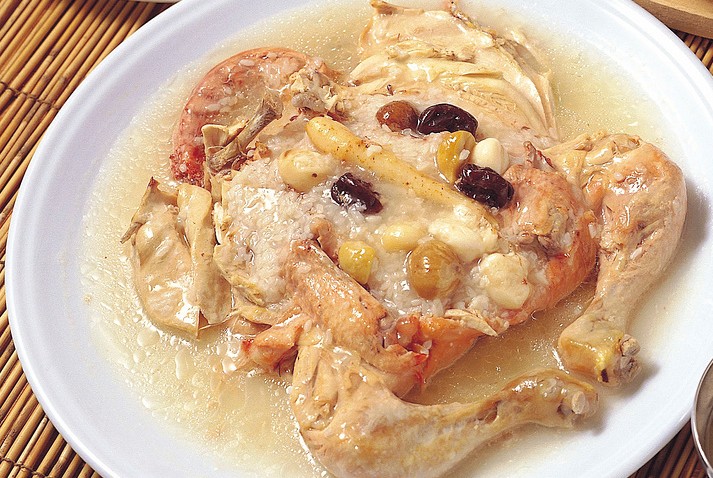

How to Make Jjim ( Braised Dish )
There are also jjim recipes for ribs, young chicken, fish, crab, napa cabbage, the heart of vegetables, mushrooms, air bladder, overripe cucumber, and crucian carp in 《Joseon Moosang Sinsik Yori Jebeop》. Let’s make a jjim with young chicken that is usually eaten as samgyetang (ginseng chicken soup).
Younggyejjim (Braised Young Chicken)
Main ingredients Young chicken, flour (starch), ganjang, pepper, bamboo shoot, lotus root, beef, pork, salt, jang, small leaf, green onion, and ginger, oil
Japtang garnish Egg, manna lichen, whole chili, and pine nut
How to make it
Method 1
① Boil the chicken in hot water to remove its hairs. Remove all the bones and tear the meat finely.
② Cool the chicken broth, dissolve the flour, and stir. When the powder is almost cooked, pour it over the chicken meat.
③ Season it with ganjang and pepper, and put it in a bowl. Make sure it is not too soggy and add the garnish on top.
④ If you are not going to use all the garnish, cut the eggs, manna lichen, and whole chili into thread-thin slices, and put them on the meat. It is also good if you add pine nuts only.
⑤ Adding the bamboo shoots and lotus roots will improve the overall taste.
Method 2
① Wash chickens that are 50 to 60 days old and remove their innards.
② Put the ground beef and pork, salt, jang, small leaves, green onions, pepper, ginger, oil, and chopped chicken innards inside the chicken and seal it.
③ Pour water into a pot and boil the ingredients until soft.
④ Add the remaining seasoning to the broth, dissolve flour or starch, and season with jang.
⑤ Split the braised chicken and put it on a plate, pour the broth, and sprinkle with pine nuts. Make a garnish with egg white and yolk by cutting them into thread-like slices and putting them on top.
How to Make Gui ( Grilled Dish )
《Joseon Moosang Sinsik Yori Jebeop》 states that gui (grilling) is not an easy dish that anyone can do. Grill the fish well from the inside out without burning it, put it in an oiled pot, and cook it again by turning it over repeatedly over a low fire. Put the fish in a bowl, cover it, wrap it with a cloth, and put it in a warm place or heat it in boiling water. When you open the lid to eat it, steam will rise from the bowl so you can eat it warm. The book teaches you how to grill fish well together with the grilled croaker recipe.
Grilled Croaker
Main ingredients Croaker, jang, sugar, green onion, oil, ground sesame salt, and pepper
How to make it
① Peel the croaker, remove the bones, cut it into large pieces, put a little sugar in a thick jang, apply it on the fish, and grill it.
② For the garnish, chop the green onion, add oil, sesame salt, and pepper to sugared jang, mix it with water, rub it on the fish, and grill it.
③ Turn it over and over while coating it with jang using a pheasant feather, and grill it over a low fire until it is thoroughly cooked.
How to Grill Fish Well
• When grilling a fish, first pierce its mouth with a stick (thin twig), then hold it far away from the brazier, and warm it.
• After all the juice of the fish comes out of its mouth, cut it into large pieces or grill it whole.
• The fish must be dry so that it does not stick to the grill when grilling.
• It is good to dry the inside and outside of the fish before grilling, or grease the grill before grilling the fish.
• If the fish is marinated in salted shrimp for a while before grilling, it will be tastier and you don’t have to dip it in any other sauce.
• It is also good if you apply Japanese soybean paste before grilling the fish. Any fish can be grilled, including carp and Korean piscivorous chub (freshwater fish in a species of cyprinid).

 한국어
한국어
 English
English






